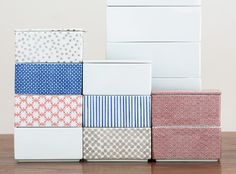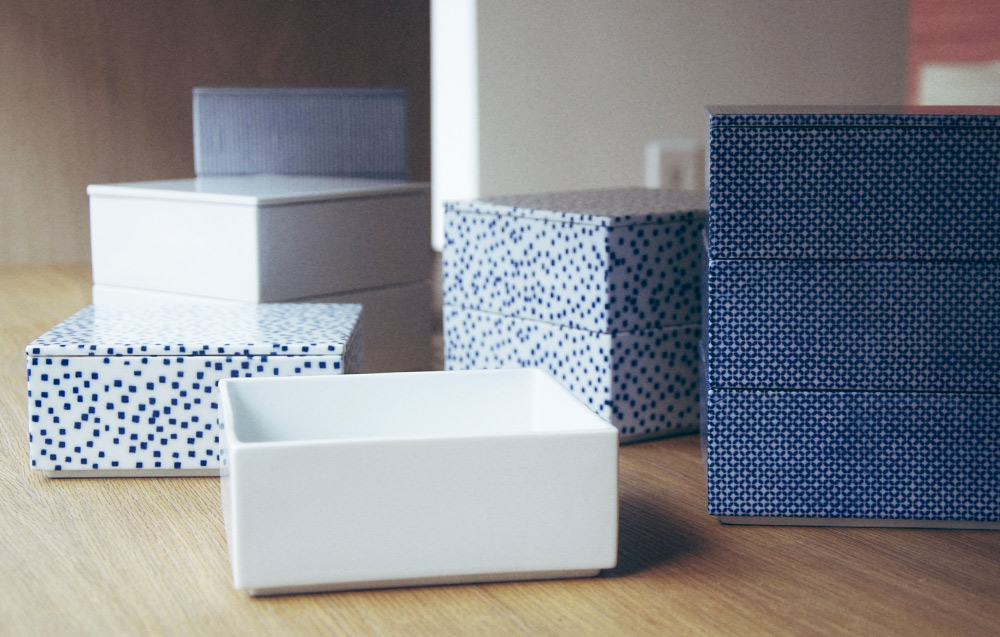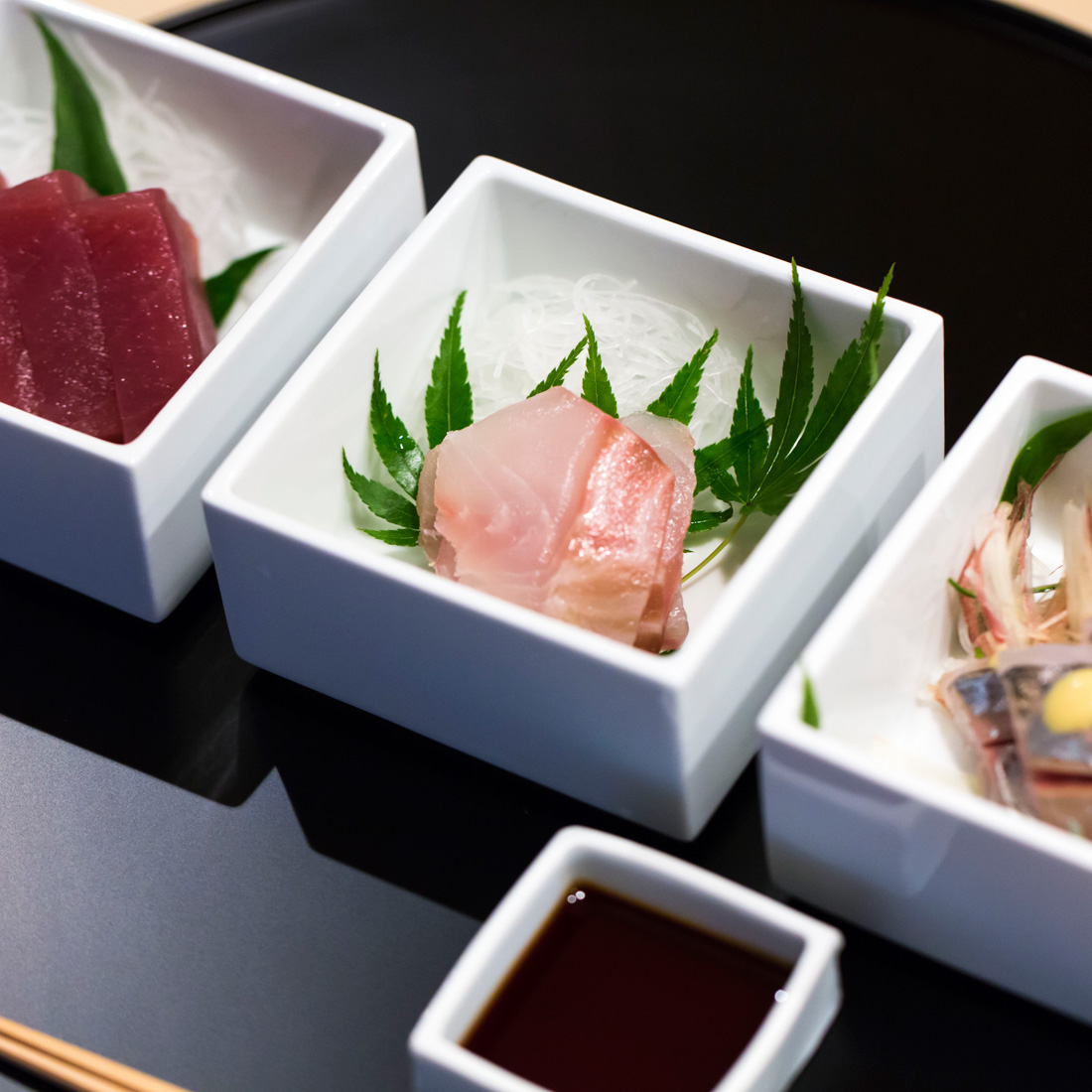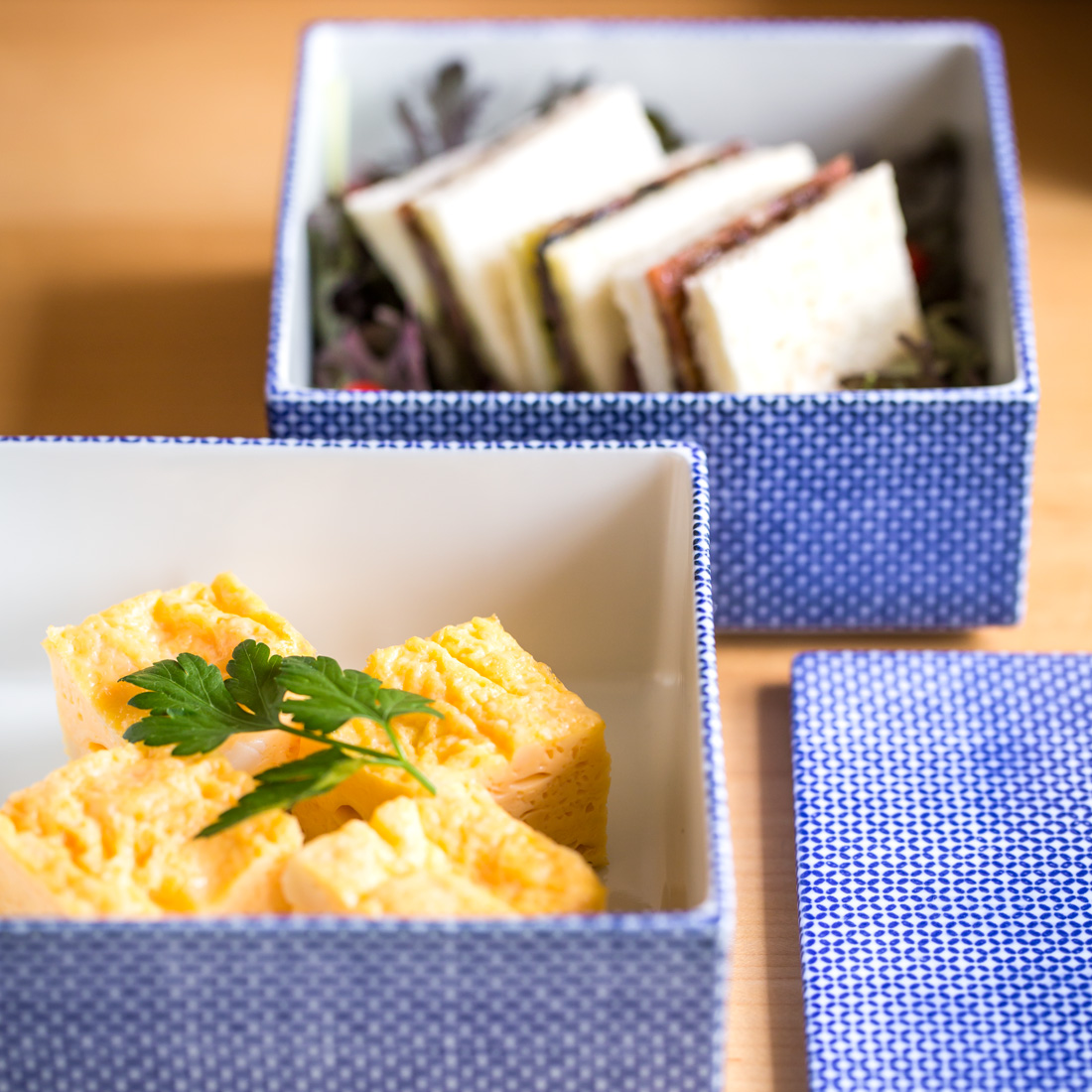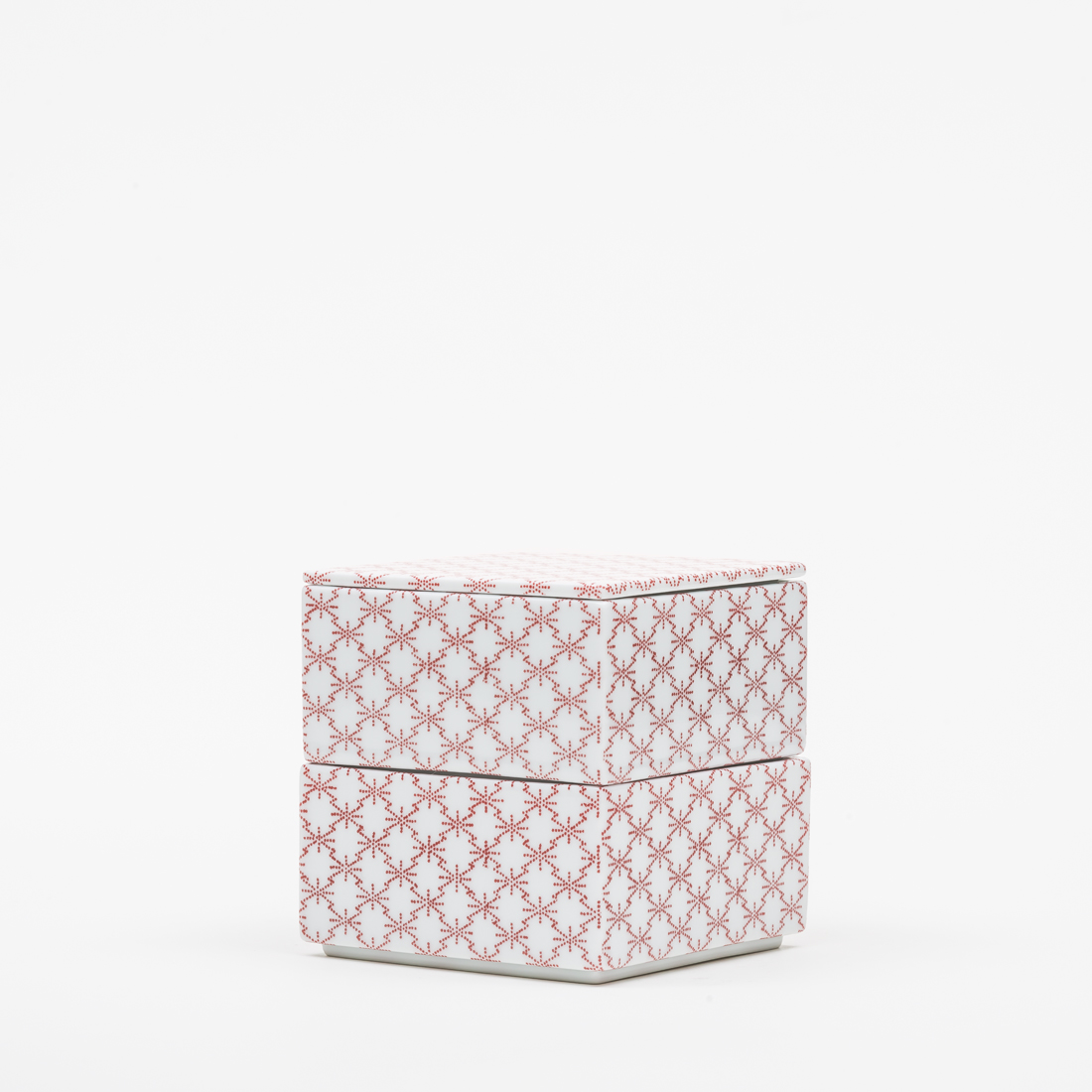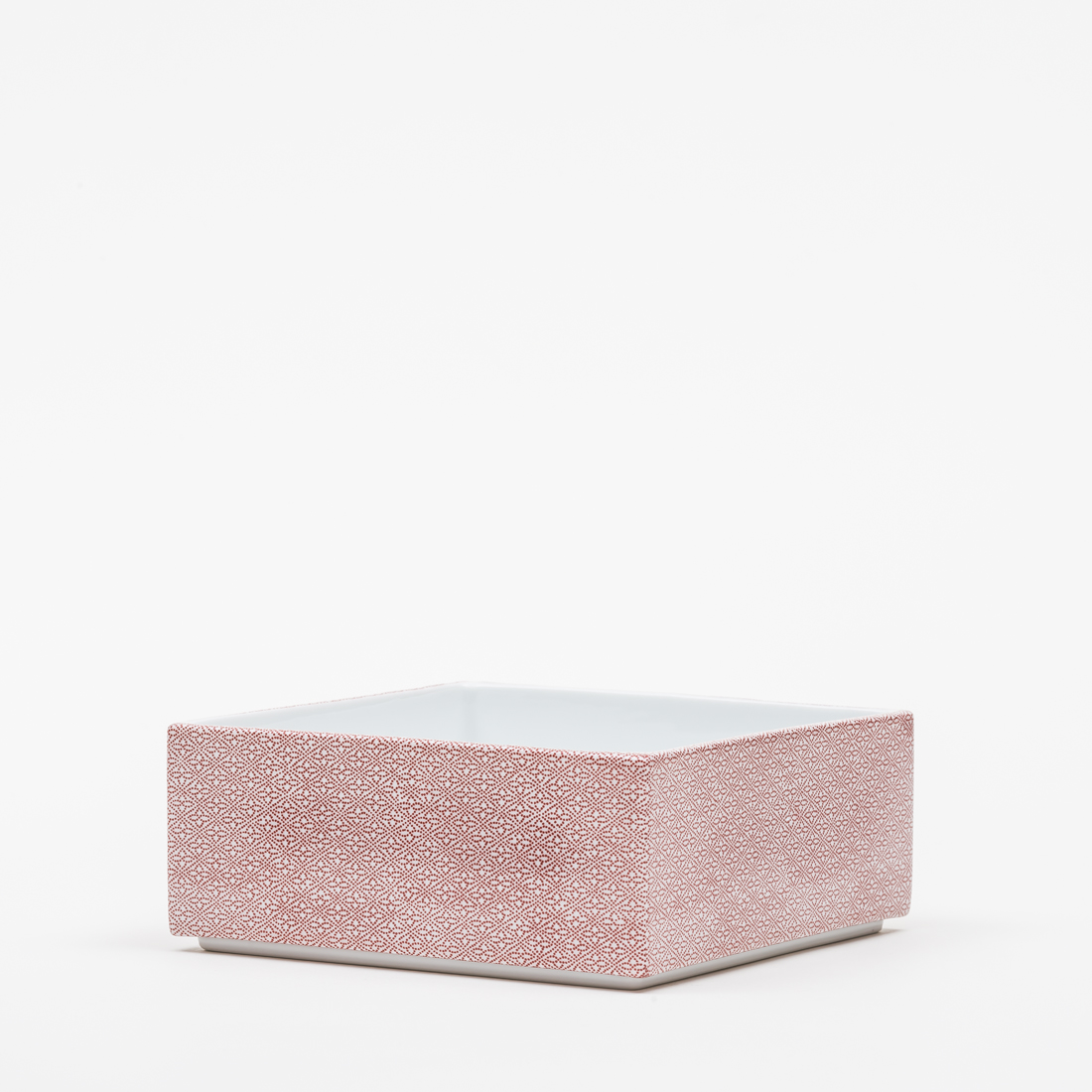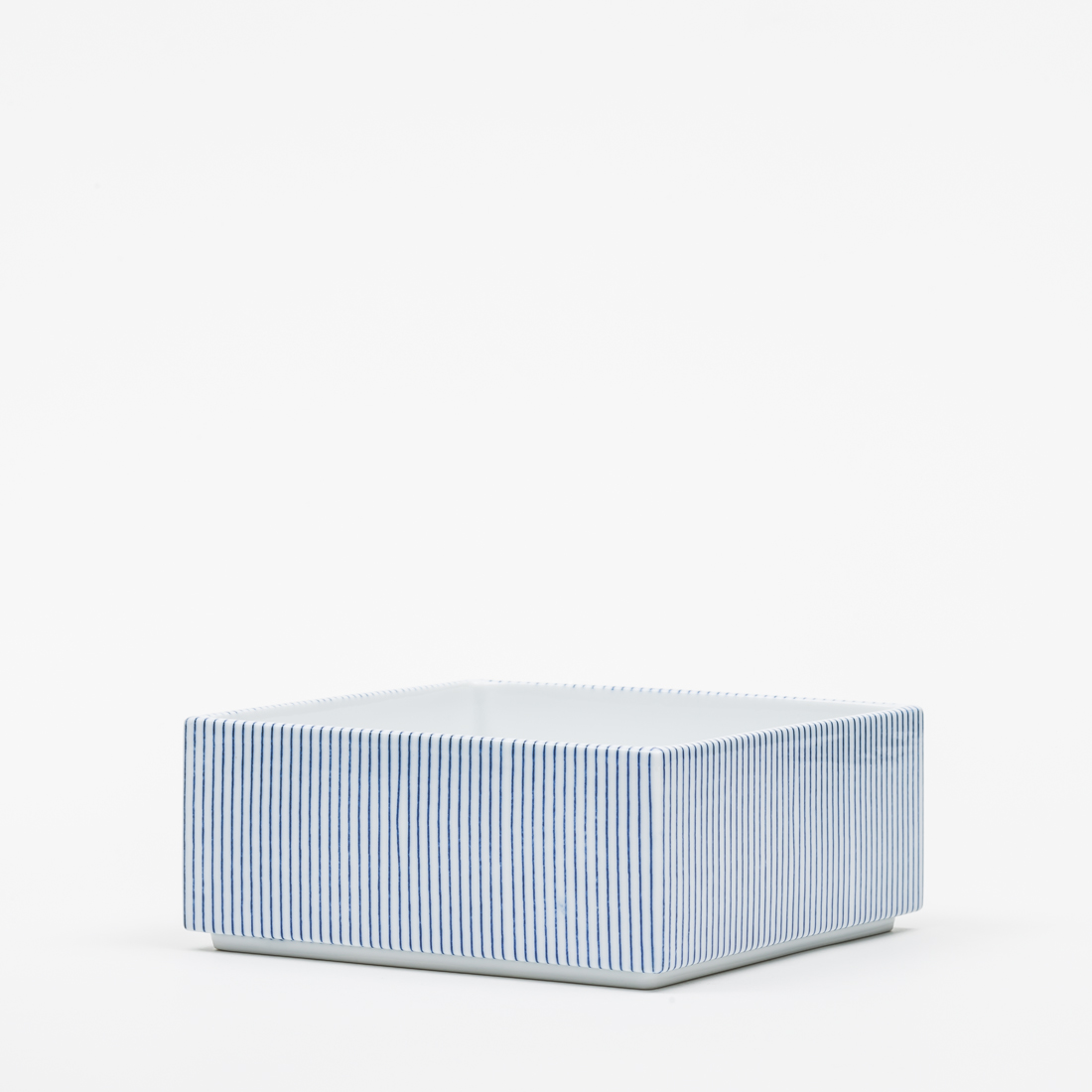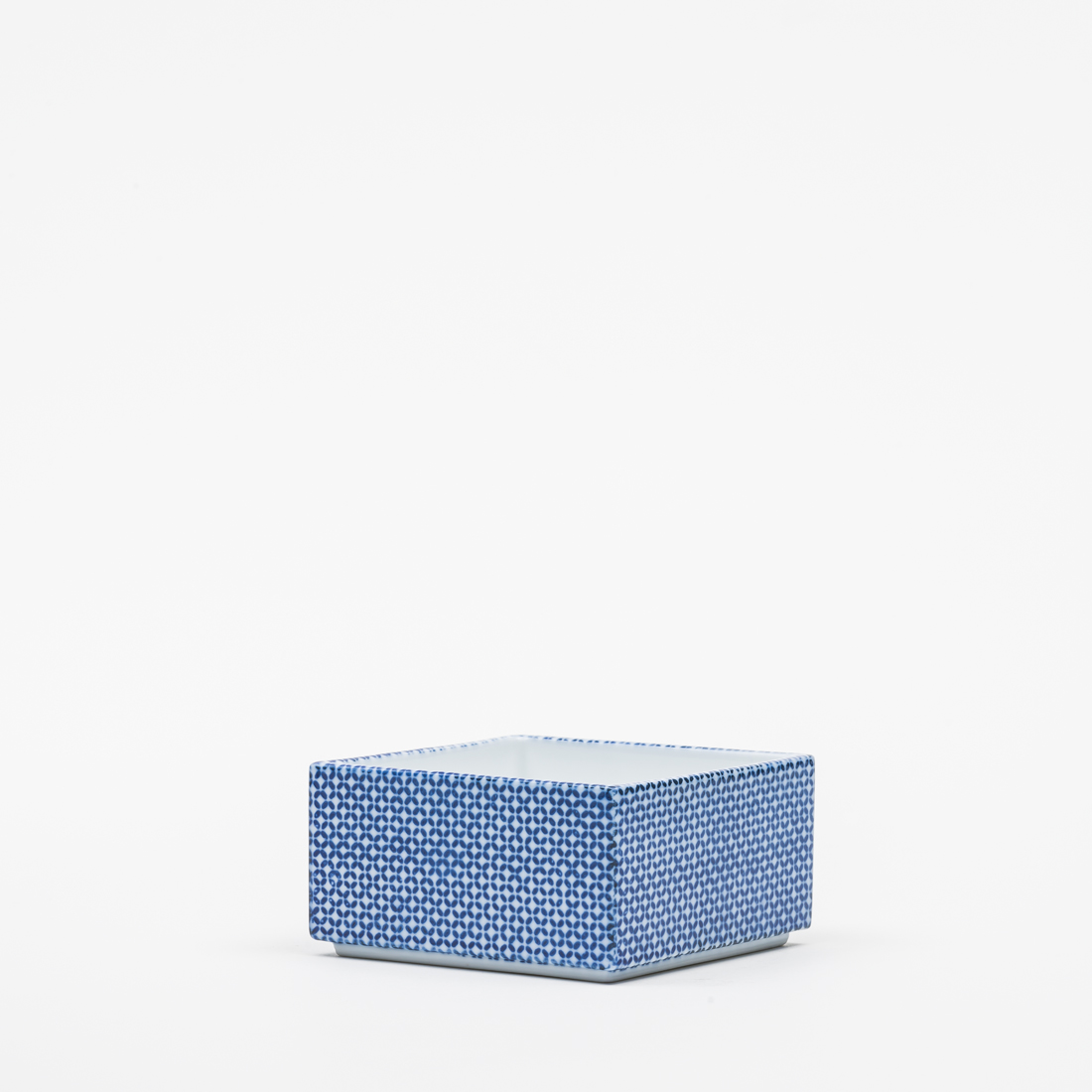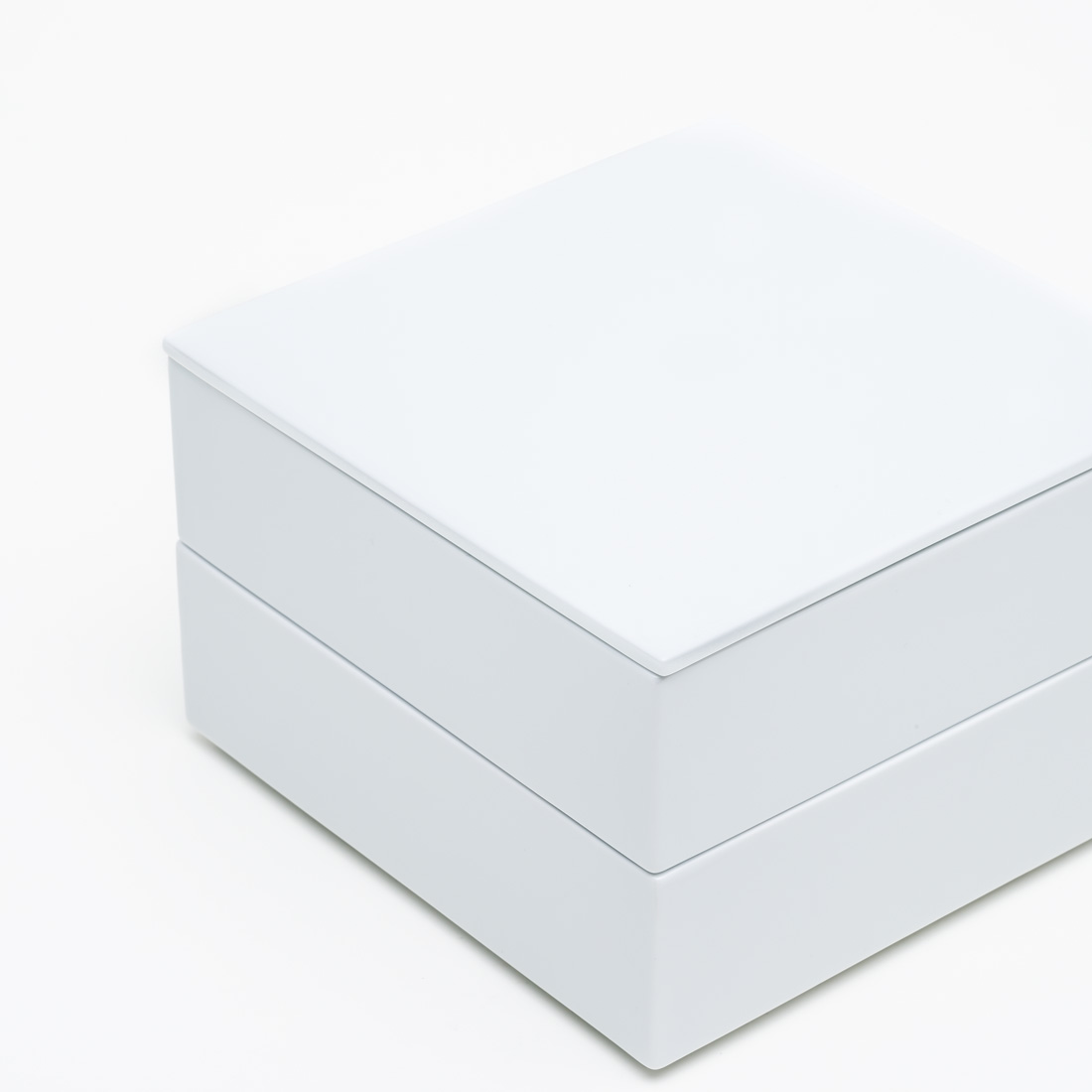Jubako Boxes from Time & Style
From Hasami City, Nagasaki Prefecture. Hasami porcelain has been part of the history of Japanese pottery for roughly 400 years.
In the beginning, ceramics were at the heart of the production, but with the discovery of the clay used to make porcelain in the 19th century, porcelain gradually became the main type of ware to be produced. White, celadon and underglaze cobalt blue porcelains are the staple of Hasami porcelain.
Hasami boasts the largest porcelain production in Japan, using the elegant, white Amakusa clay to create sophisticated dishes.
Surrounded by other leading names in Japanese pottery production, such as Arida, Imari and Mikawachi, Hasami continues to make dishes for everyday use.
It is no exaggeration to say that the Japanese dinner table, with its assortment of different ceramics, porcelain, lacquerware and glassware, has been influenced by the evolution of Hasami porcelain dishes.
Boxes have held a special place within the Japanese traditional culture for centuries. From the bento lunch boxes to New Years gift boxes, each type has its own traditional use. Nowadays a lot of these boxes are lacquerware. However, our weighty porcelain ju-bako are a new take on this tradition. They can be used to preserve food, or as a serving bowl at the table. They can also be used to put objects in.
We have two sizes and different colors that can me mixed colors.
Small: W85xD85xH43
Large: W130xD130xH53

